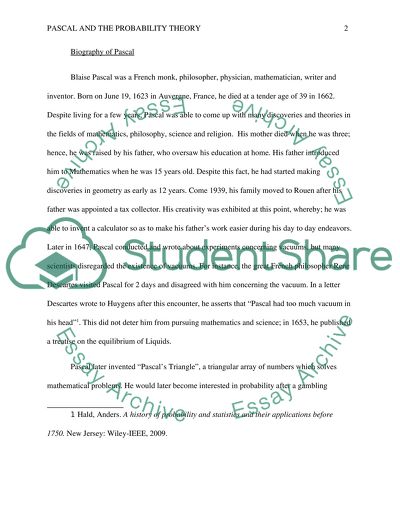Cite this document
(“Pascal and the Probability Theory Research Paper”, n.d.)
Retrieved from https://studentshare.org/mathematics/1395879-pascal-and-the-probability-theory
Retrieved from https://studentshare.org/mathematics/1395879-pascal-and-the-probability-theory
(Pascal and the Probability Theory Research Paper)
https://studentshare.org/mathematics/1395879-pascal-and-the-probability-theory.
https://studentshare.org/mathematics/1395879-pascal-and-the-probability-theory.
“Pascal and the Probability Theory Research Paper”, n.d. https://studentshare.org/mathematics/1395879-pascal-and-the-probability-theory.


